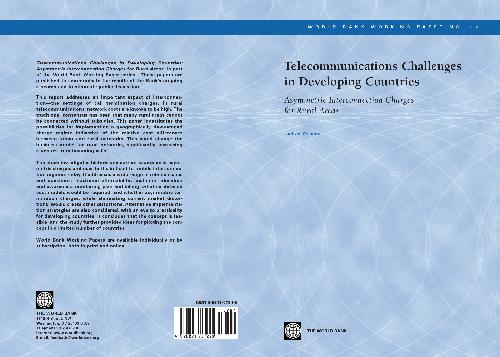Dymond A.0-8213-5784-0
Table of contents :
Cover……Page 1
CONTENTS……Page 5
Acknowledgments……Page 7
Acronyms and Abbreviations……Page 9
Executive Summary……Page 11
General……Page 13
The Starting Hypothesis……Page 14
The Challenges……Page 15
Interconnection: Operator-to-Operator Payments……Page 17
Who Pays the Additional Charges for Asymmetric Interconnection?……Page 18
Theoretical Justification for Asymmetric Interconnection……Page 19
Operator Investment Incentive……Page 21
Fixed Network Precedents……Page 23
The Precedent of Fixed-Mobile Asymmetrical Interconnection……Page 28
What Networks Could be Considered for Asymmetric Interconnection?……Page 29
Should Asymmetric Interconnection Apply to Fixed and Mobile Operators?……Page 31
Does Implementation Require a Detailed Cost Study First?……Page 34
Should Asymmetric Interconnection Reflect or Follow Peak/Discount Rates?……Page 35
In Favor of Revision to “Calling Party Pays”……Page 37
Counterarguments……Page 38
Additional Issues to Consider……Page 39
Conclusion on Tariffs……Page 40
Downstream Beneficiaries—Should They be Regulated or Licensed?……Page 41
What Prerequisite Changes in the Numbering Plan are Required……Page 43
What Modifications to Intercarrier Billing Would be Required?……Page 45
Comparison of North American and Chilean Financial Models……Page 47
Conclusion……Page 48
Study Outcome……Page 49
Next Step……Page 50
References……Page 51
Team DDU……Page 53

Reviews
There are no reviews yet.